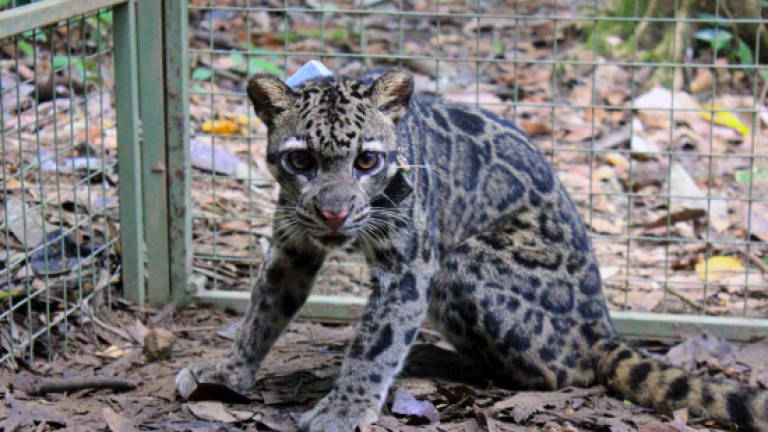First satellite collaring of female sunda clouded leopard

KINABATANGAN: For the first time ever, a female sunda clouded leopard was trapped and fitted with a satellite collar.
The effort was part of a collaborative project between the Sabah Wildlife Department (SWD), Wild Conservation Research Unit (WildCRU) and Danau Girang Field Centre (DGFC).
The project focusing on research and conservation of the sunda clouded leopard and other carnivores in Sabah, is mainly funded by Sime Darby Foundation.
Additional funding and support are provided by Atlanta Zoo, Houston Zoo, Recanati-kaplan Foundation, Robertson Foundation, Point Defiance Zoo, The Clouded Leopard Project and Rufford Foundation.
Andrew Hearn from WildCRU and PhD student at Oxford University, said a female sunda clouded leopard weighing 9.9kg was caught in one of the traps set up along the Kinabatangan River, in the vicinity of DGFC on Aug 15.
"It is the fourth wild leopard we collared, with this one being the first female. After over a year and a half, the capture of this healthy female cloudy we named Rahsia is a real breakthrough for our project.
"We are hopeful that the data stemming from her collar will provide essential insights into her movements that will enable the development of appropriate conservation actions for her species.
"Incredibly, a couple of days earlier, we caught another female, that we previously caught in September 2013, but she was too small to collar," he said in a joint statement by SWD, DGFC and WildCRU today.
Director of DGFC Dr Benoit Goossens said collaring was part of an intensive satellite tracking programme to study the spatial ecology and habitat associations of the sunda clouded leopard and other sympatric carnivores in the fragmented landscape of the Lower Kinabatangan, dominated by palm oil plantations and highly degraded forest.
"Our research is playing an important role in sunda clouded leopard conservation and management.
"Regardless of the level of efforts focused on maintaining and increasing the amount of natural habitat, we are ultimately fighting a losing battle, as we can currently see in the Kinabatangan.
"Therefore, understanding how wildlife is using this ever-changing landscape will help us mitigate and hopefully reduce the level of threats posed by these changes," said Goossens. – Bernama